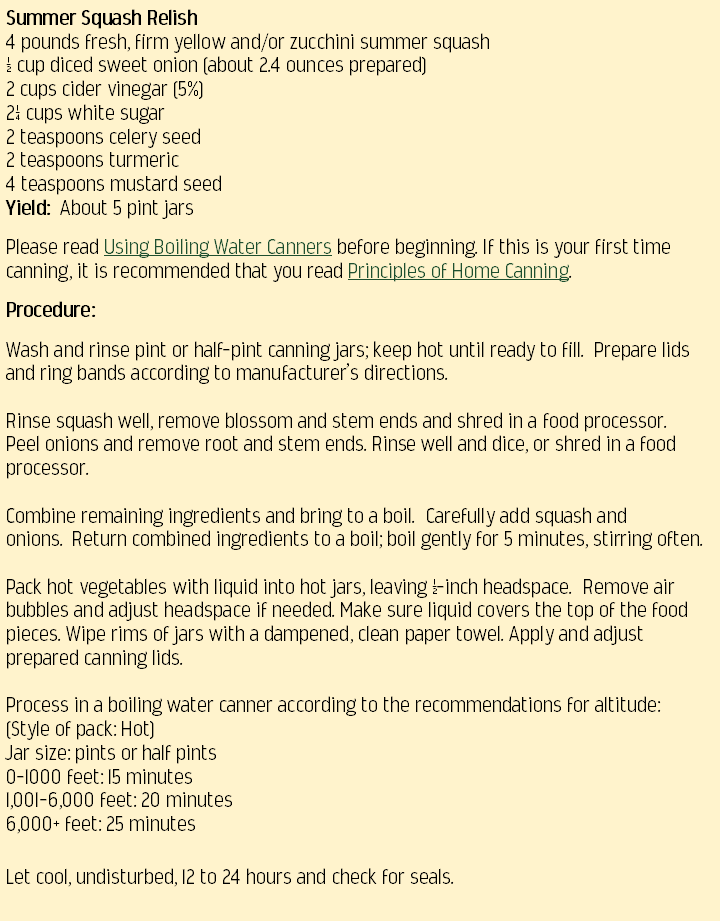|
 by Denise Sullivan, Nutrition and Health Education Specialist, MU Extension Zucchini – an often misunderstood and scorned vegetable. When it is growing in abundance, people often try to give it away to neighbors or even ‘dropping and dashing’ on doorsteps!
I too, have shared my overage with friends and family, sometimes to the point of begging them to please take it. My solution to overabundance is to have a wide variety of preparation options to choose from. Zucchini is a member of the Cucurbitaceae family and is known in Europe as ‘courgette’. It descends from squash plants grown through Central America and into Mexico more than 7000 years ago. Zucchini as we know it today was bred in Milan in the late 19th century and appeared in North America in the early 20th century. It is categorized as a summer squash, with a tender skin and small edible seeds. Ordinary zucchini can range in color from shades of green to deep golden. Squash is one of the ‘three sisters’ plants, along with corn and beans, commonly grown in native American cultures. The corn provided a structure for the climbing beans, while the bean vines better rooted the corn to ground so the stalks were not as easily blown over or washed out. The beans added nitrogen in the soil to fertilize the other plants. The squash vines acted as living mulch to deter weed plants and retain moisture in the soil, while the prickly stems deterred pests from damaging the plants. When the three crops were eaten together, they provided a nutritional balance of carbohydrates, protein, healthy fats, and vitamins. Zucchini, alone, is a good source of antioxidants Vitamins A and C, as well as potassium, magnesium, and folate. These nutrients help to reduce the risk of heart disease and certain cancers, aid in eye health and healing of skin and gums. Zucchinis are best when harvested when they are six to eight inches long. They can be eaten raw on a vegetable tray or cooked in a variety of ways. Some of my favorite cooking methods included sauteing or roasting as a side dish, stuffed with a variety of fillings as a main dish, or even baked as a sweet treat like cake or muffins. It is not uncommon for zucchini to ‘hide’ in my garden and suddenly grow to the size of my forearm! When they grow past the ‘young and tender’ stage, I prefer to use these for baking into bread, and I will often shred and freeze in one to two cup quantities to use later. With this method, you will want to drain the liquid that separates prior to use. Another good use for over-mature zucchini is preparing in a relish. The recipe provided is one that I prefer over a standard cucumber relish and is simple for even a novice canner. If you are new to food preservation, please seek out reliable, research-based resources, like the National Center for Home Food Preservation at https://nchfp.uga.edu/ or MU Extension’s Food Preservation website https://extension.missouri.edu/programs/food-preservation You might also consider enrolling in MU Extension’s self-paced on-line course, which can be found at https://extension.missouri.edu/food-preservation-2021 Denise Sullivan is a Nutrition and Health Education Specialist for MU Extension in the Urban West Region, serving Jackson and Platte Counties. For research-based nutrition and food safety information and programs, visit https://extension.missouri.edu/counties/urban-west-region Comments are closed.
|
Categories
All
Archives
July 2024
|
Grain Valley NewsGrain Valley News is a free community news source published weekly online. |
Contact Us |



 RSS Feed
RSS Feed
